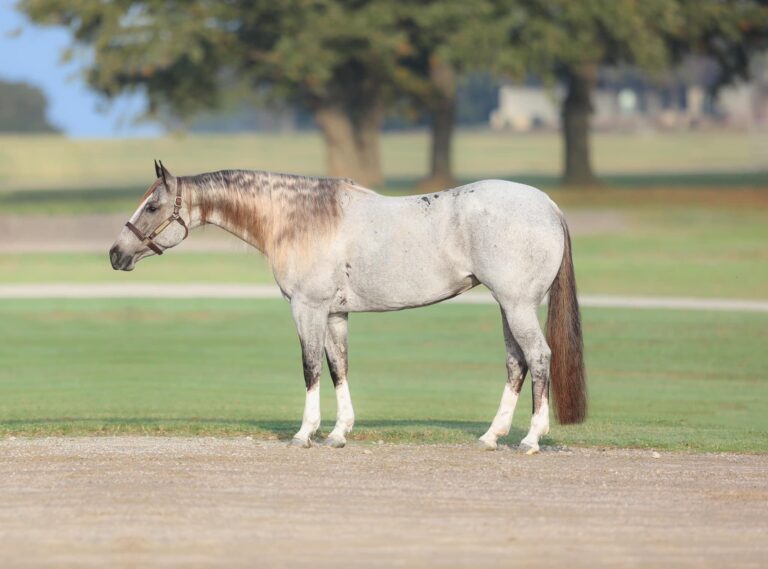It is universally accepted that handicaps put the “industry” into team roping.
Team roping’s handicapping system was the key that opened up the state lines to team ropers and has been the basis for the explosion of team roping that has made “Cowboy Golf” the great unifier of horse disciplines internationally.
The recreational sport of team roping was really born around the underlying premise that a system could be built to track an individual’s fluctuating roping performance, both up and down, throughout their lifetime. It is a daunting never-ending task. There are always those, based on their personal perspective and desires, who will claim it has never been done well. But quite literally, the proof is in the pudding.
The Original Software: TRIAD
Subjective balloting by committees that occurred during the 90’s was abandoned in 2000 for the objective, data-based TRIAD system. Even with a change in owners, there has been subtle and continual improvements and changes occurring for the last 24 years. To date, there was only one major adjustment that impacted this system. The WSTR came on the scene in 2006, and in 2010, Association founder Denny Gentry decided that the nine-point system was discouraging competition and handicap changes of a full number were too severe. WSTR switched from the nine-number TRIAD system to their own 18-point scale. Overnight, the plus-system (half numbers) became the new standard for the industry. USTRC and TRIAD struggled a little while as the programmers at TRIAD scrambled to modify the entire TRIAD program to handle half numbers. Once accomplished, USTRC invited WSTR into the TRIAD fold. It would be hard for ropers in this day and age to imagine use of a nine-point whole-number system, but that is our history.
There have been many subtle changes through the years that have gone generally unnoticed by the roping public. Internally, the professionals routinely pour over the incoming data and re-analyze the use of the primary inputs, catch ratios, money won versus money spent, win-to-enter ratios, speed-per-win, par times and trending. All of that information is then looked at in the context of time increments: 12 months, 24 months and 36 months. The outcome of these changes continues to advance the program in small, unnoticed increments by the weekend warrior.
Global Event Management Systems: GEMS
Policy changes are the other factor that have an impact team roping handicaps. The rewrite of the event software—Global Event Management Systems (GEMS)—created Global Handicaps and, for the first time ever, set up an IT and data center to run independently from the associations. The entire Global construction advanced the roper experience by adding functions like Time Tracker and video run delivery. Equine Network, that owns both WSTR and USTRC, enhanced the Global Event Management Software that operates the ropings and offered it free to every contractor using the handicaps. This has led to more and better information on which to base the handicaps.
Global 2.0
Now to the point: the theory and philosophy that were the primary basis for the system will soon be turning a corner. After 24 years, key aspects of the system, good and bad, are now fairly obvious. Experience and common sense, and Equine Network’s goals of adapting to current roper habits, is spawning change. Programming is underway for some significant
“It always makes me nervous messing with something that is working,” Ty Yost, representing WSTR on this issue, said. “I haven’t heard as many complaints about handicaps the last four years as I had before that. But every contractor avoids getting into conversations about handicaps because the current system is complicated and hard to explain. I’m supporting this effort to simplify, as much as possible, so everyone in the business—mainly ropers—understands how it works.”
This step is a bigger project than the usual yearly maintenance modifications. The data-driven handicap system was built to be objective with the intent of tracking and handicapping winners to keep the competitions even and the playing field flat. It is easy to see that this effort has worked, roping competitions look fair and our sport has grown for decades. But emphasis has changed over the years and the biggest part of this job is still subjective. In 2024 the reality is clear, the most significant aspect of roping analysis is handling the smooth decent of the majority. Witness the recent addition of the #2 handicap as starting scale number and the addition of a #7 division and, in some cases, a #6 division. The decision to make space for the downward descent was made over 20 years ago, and the remaining #1 handicap is being held in reserve for use in the next 10 to 20 years.
The downward movement of handicaps because of Father Time is inevitable. Witness the recent Jake Barnes and Clay Cooper interview on Roping.com talking about aging and lowering their numbers. The computer analysis, for the most part, handles the winners, but, for the rest of the roping world, the employees have a difficult task handling those who head the other direction. The new software, first and foremost, is being designed to identify ropers who are struggling and smoothly transition them downward without the need to file an appeal. Internally, appeals have been a “manual” roper request that requires a subjective analysis decision. No system will eliminate the need for appeals, but this will be the first designed effort to routinely identify reductions.
What Global 2.0 Will Address
In a nutshell, over half of the new design will address downward movement, but that doesn’t mean that a significant effort won’t be directed toward improving current analysis. It is considered blasphemy to say Global has plenty of performance data, because enough is never enough. But, coupled with more arenas using the system, and picking up “free-form data” from all levels of rodeo, and small non-GEMS events, the amount of information is tenfold of what it used to be. But the focus of the programmers revolves around a better common denominator for comparing all types of ropings and measuring “value of wins.”
When it comes to assessing performance of winners, the prevailing theory at this point are to use par times as the common denominator for the first level of evaluation. Global has the average yearly par times for what it takes to win first and last place in every division in the country. Global has this information for four steer contests and three steer contests. The new theory of evaluation revolves around what performance should be counted for and against handicap adjustments. If a win is within or longer than the time frame of the national par per division, those wins would have no impact. An attempt will be made in the testing phase to see if ropers could be allowed to maintain a handicap unless they break outside of the performance of the divisions they compete in. Par times essentially become a common denominator that will balance large ropings, small ropings, aged etc. Very simply, too fast is too fast, regardless the number of teams, or age of the ropers, and slow is always slow.
“I expected to hear a lot about team roping handicaps when I took this job, but up to this point it hasn’t been bad,” John Johnson, USTRC president, said. “I think that’s because so many more ropers get lowered from the data than get raised. But I hear ropers every day worried about getting raised who really don’t stand any chance of that happening. These programmers are talking common-sense stuff that should get rid of a lot of that concern, and I really hope they can pull it off.”
Sooner or later, the bottom line always comes down to the money. Ropers have requested—and Global agrees—that no record should be evaluated until a roper exceeds 100% return on their entry fees (excluding teenagers who have to have a different set of procedures to catch their drastic and sudden shifts).
Then comes the issue of how much money should a roper be allowed to win before it overrides all other performance data? There are lots of discussions taking place on how to balance the earnings from large, high-priced ropings with huge payoffs versus cheaper, smaller, multiple-entry or drawpot ropings? These two questions over total money won have created a lot of debate within the industry. Events like the Ariat WSTR Finale, the BFI and USTRC’s Cinch National Finals tend to skew the stats.
The invention of the futurity events have added hundreds of thousands into the equation, which ropers claim should not be considered because its results are based on “judging.” The same argument holds true for the Riata Championships, the WSTR’s richest qualifier, money won proration is advocated since nearly half the payoff is added money.
Programmers are confident they can come up with a way to value winners’ dollars within the system taking into consideration total entry fee price and number of entries that will be fair to ropers. But it is doubtful a fair valuation to balance dollars will keep a roper from yelling about total dollars won.
Ropers whose appeals were denied or who can’t argue about their strong roping stats, more often than not, revert to the “comparison” ploy. If they can compare to a roper who “use to be a pro, is younger, wins all the time in their perception, is richer with better horses, etc.” “Surely there must be favoritism by someone.”
Research on Team Roping’s Handicaps
- The USTRC Creates TRIAD
- The Global Evolution: Introducing Global Handicaps
- The Men Behind the Curtain
- A Rock-Solid Office: The Men and Women Behind the Entry Office
- The Score: Season 2, Episode 26 with Gary Poythress
Global is a data function, and the association customer service employees are the interpreters. They interpret the computer stats for ropers, and if a roper has compelling information that is important, they transfer that to Global who will run an individual analysis. But despite popular belief, there is no person anywhere who can agree with a roper’s argument and then simply punch a computer button and make all their wishes come true. No response or explanation will be an acceptable answer to someone who thinks he or she should be able to win more than they spend every single year.
The folks at Equine Network are making an effort to make the system better and easier to understand for the roping customer and the employees who handle day to day questions.
“We knew when Equine Network purchased the event businesses that we had a million-dollar-a-year responsibility to not only maintain the team roping handicap system, but to make it better,” Shanon Hunt, who has been the top developer of the system for 15 years, said. “We are currently evaluating all the components in our software to see what should be kept and what will be eliminated. Once that is done we will begin to add new components that we have talked about for years. We will soon be able to run our old version and the new system side-by-side to look for comparative improvements.”










